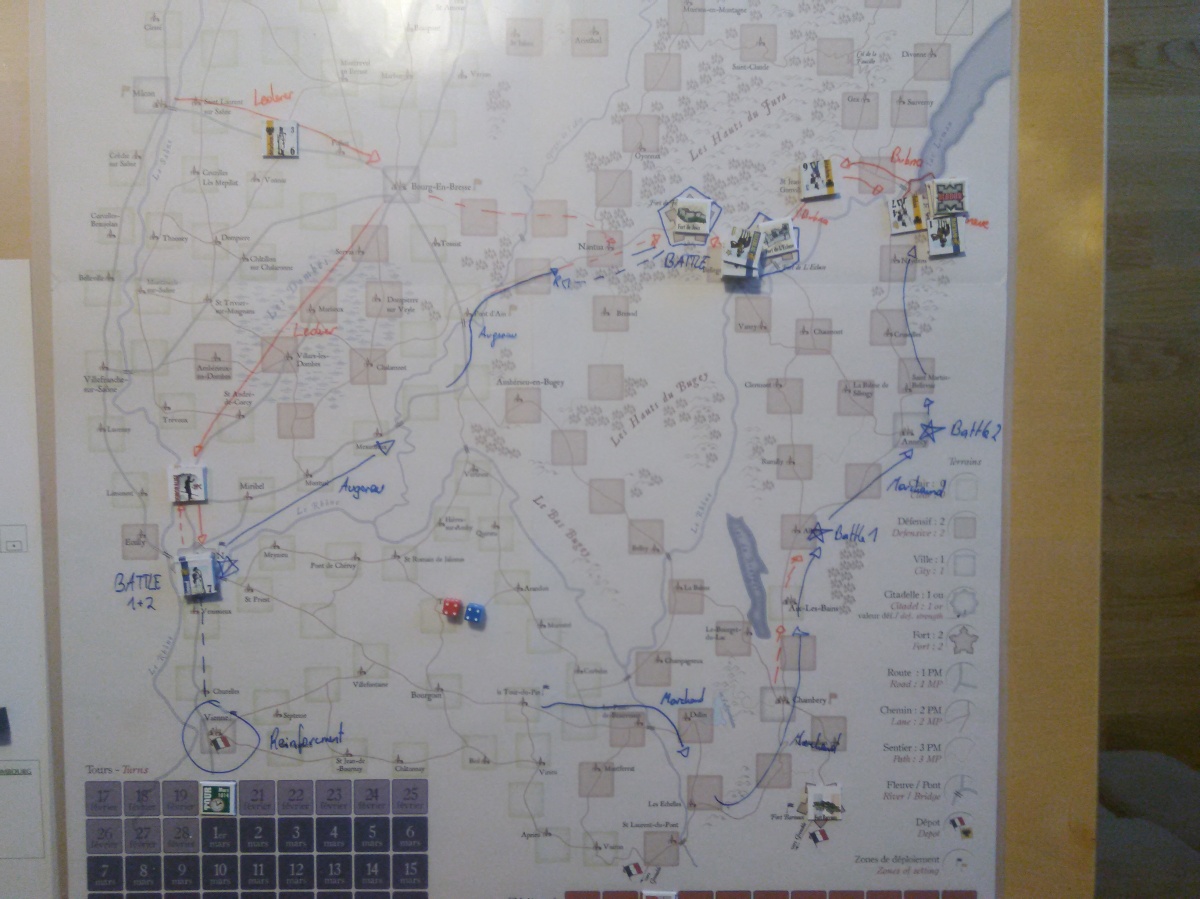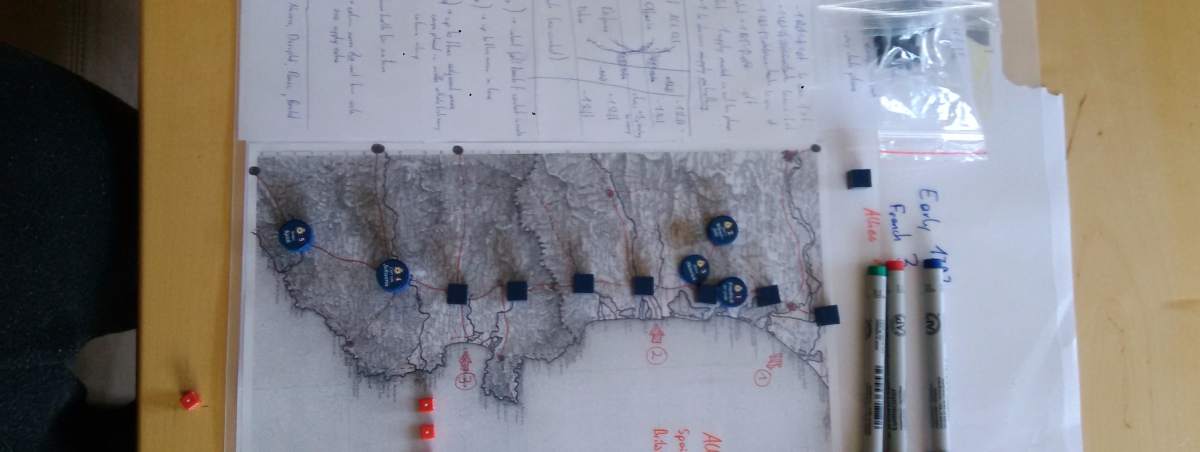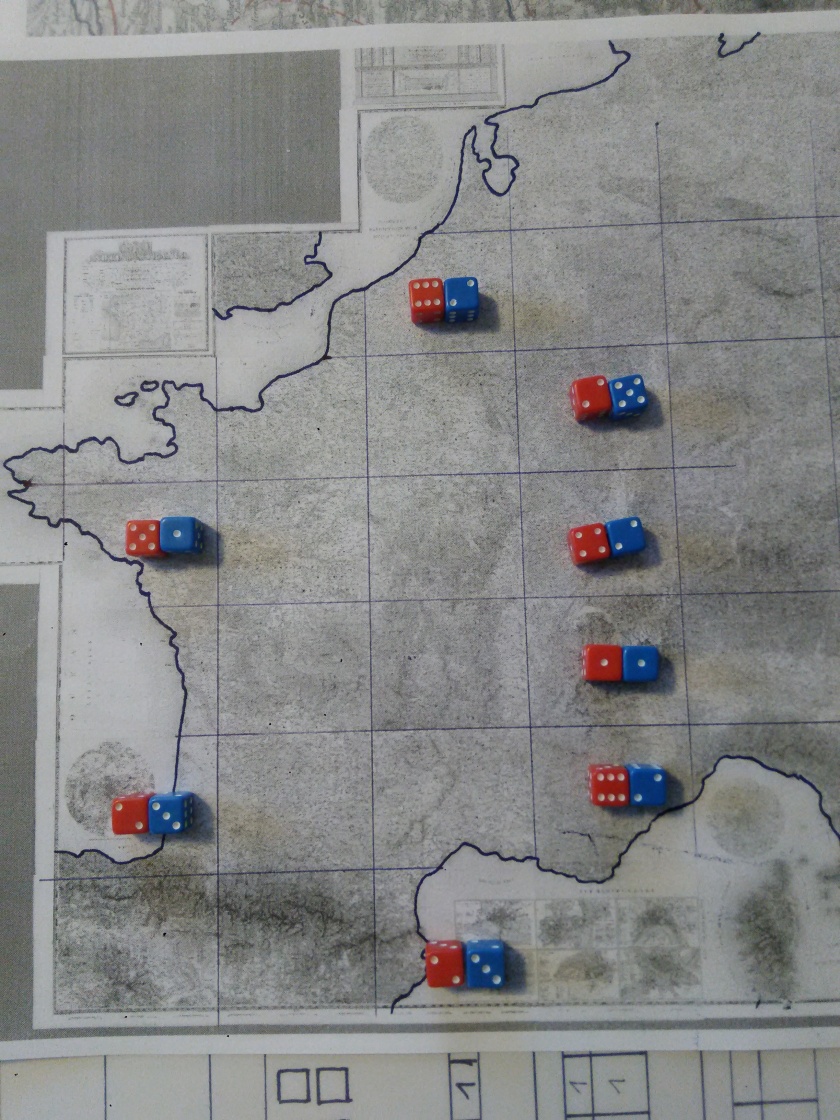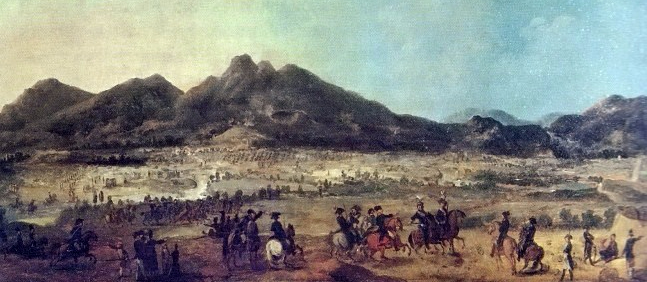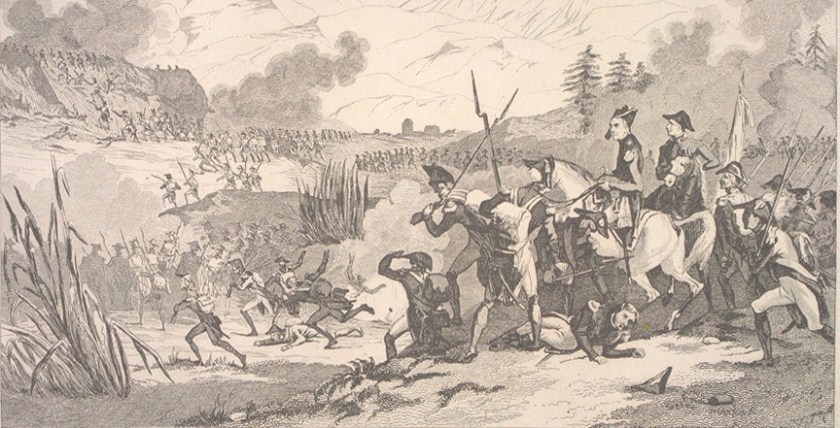
In this test game I will try to defend france from my hopefully challenging austrian bot.
It is the year 1792, the french republic has declared war on Austria. For want of material and funds the young republic is on the defensive in eastern france. General Dumouirez is charged with summoning any troops he can get a hold of, for a strong allied force seems to be heading for Metz and Nancy.
The french plan is to hold Strassburg with most forces (5 divisions) and swing around the right flank, along the western side of the Rhine, if the Austrians decide to attack Metz or Nancy. General Dumouirez idea ist to cut the supply of the Austrians if they move to recklessly for the two fortresses.
Austria starts at +3 morale and subsequently all columns roll either attack or assault orders. This will be quite the onslaught, not a way of making war typical for the Austrians in this period.
Phase 1 french
Every phase starts with the french (the players) columns acting out their orders. If a column is on a move order, for example, it will move along the path indicated in its orders sheet until the qxhaustion threshold is reached.
F2 is on “scout” orders and decides to scout the northern column coming from Trier. All other french columns are on hold or reserve, thus they don’t move.
Phase 1 Austria
In the phase of the bot 5 d6 are rolled to see which columns act and how often they move. Every austrian column acts as often as its number shows up on the dice. This is because time is not a constant in this game. The different columns acting at different speeds, represents the fact that the commanding officer only know what is reported to him, thus an enemy column acting more than once per phase represents “hidden movement” or the failure of subordinates to report what’s happening.
Austria rolls no doubles in the first phase. Every column only acts once.
This also ties into the “special actions”. For every double the player gains 1 special action point which he can use in a number of ways. For isntance to change the orders of one of his columns. Thus while sudden fast movements of the enemy may unhinge the plan of the player, he also gains the means to get a new plan rolling.
As there are no doubles rolled this turn the player does not gain any special action points.
A2 crosses the river slowly moving on Metz
A3 moves quickly and suffers 1 exhaustion
A4 suffers 2 exhaustion
A5 finally only crosses the river and gains 2 exhaustion as well
Noone changes his orders
Phase 2 french
F2 moves north again
Phase 2 Austria
One special action for France: France decides to change the orders of f1 to attack Landau – Durkheim – kreuzach, which would result in all loc to the east cut.
A1 moves up to cross the Rhine at Speyer
A3 takes a double action and moves far forward
A5 continues to be extremely slow. This is a problem, i would like to test the strength of the Austrian columns but f2 is waisting its time while the austrians push through the middle:

Situation just before phase 3, with austrian supply network.
Phase 3 french
F1 moves up towards Landau. Looks like a1 and f1 will clash near Landau.
F2 scouts a5 discovering 4 divisions.
Phase 3 Austrian
Another possibility to change one order. F2 should move back. I need to find out the strength of the central austrian columns and maybe i get a chance to slow them down. I need to hold Metz and Nancy until the supply is cut.
A2 changes his order to hold
A3 moves right up to Nancy and reveals itself as being 3 divisions strong
A5 attacks and promptly ambushes f2 wiping the small scouting force off the table. If an ambush happens the enemy force can’t retreat, resulting in the loss of my small cavalry vendette.
-1 morale for the french
Phase 4 french
F2 takes Landau
Phase 4 Austrian
With a roll of 6 a1 attacks even though it’s contrary to character of the commander and force relation.
F1 employs a planned defense only getting one division unordered while a1 rolls 2 hits, has to fall back over the river disordering it’s last division
A2 still holds
A3 changes its orders to attack Strassburg. this looks almost historical: Austrians moving around aimlessly. Should the austrians reach undefended strassbourg though the loss would devastate french morale and cut of f1 from supply.
A4 moves up
A5 removes exhaustion by resting
Phase 4 french
It’s a race against time,if I cut enough supply roads before Metz or Nancy fall the austrian columns will just stop moving as they can’t rid off their exhaustion anymore. That Strassbourg is now undefended makes me quite nervous though. One daring dash forward would result in the loss of the city and would push my morale so low that there would be almost no chance of further offensive action.

F1 move up cutting even more supply roads for the Austrians. They only have one road left for their push. Meaning every column but one in the centre gains 1 exhaustion every turn.
Phase 5 Austria
One command change. Strasbourg is lost anyway if the austrians move at all. F4 shall press its luck and move on offensivly
A1 reorders one division
A3 and 4 both rest to remove exhaustion.
A5 acts twice moving southeast
Phase 5 Austria
Fight at Nancy
A4 starts an all out assault of nancy. Fortunately the Austrian troops are really bad quality and suffer heavy losses in the attack. Nancy holds
Phase 6 french

I decided to end the game here. The austrians are cut off from supply. Playing time was one hour. Game went rather well. This was a big test for the rule system as simulating an offensive bot is rather more difficult than a defensive one.


